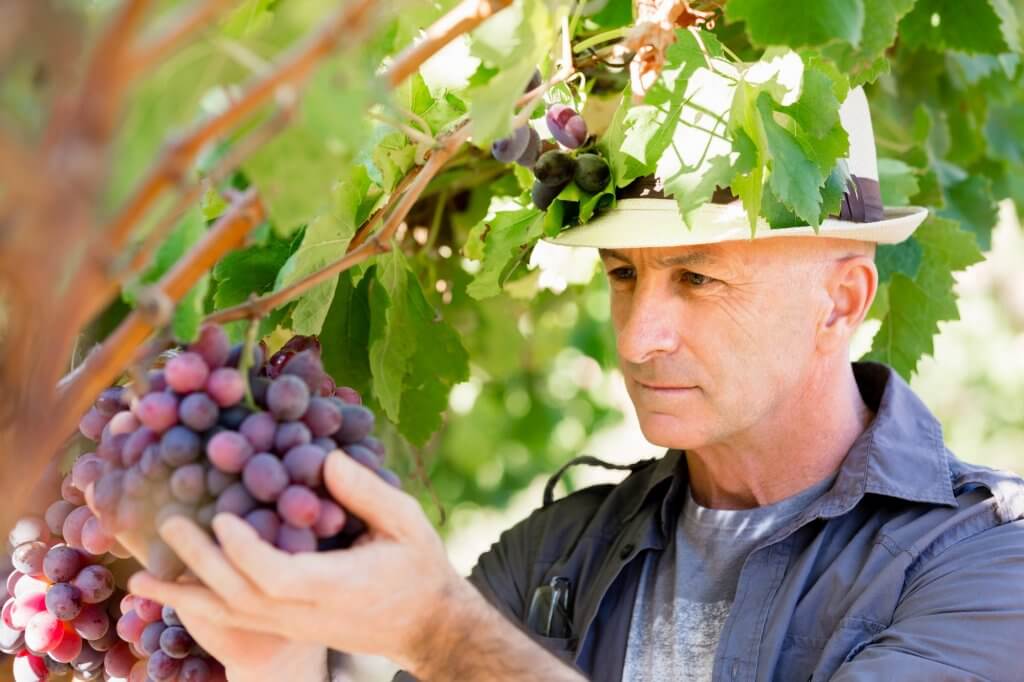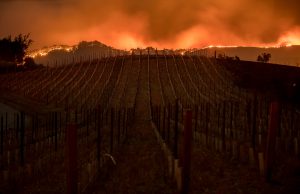For years, the Left Bank was the more famed of the two portions of Bordeaux. That all changed when Robert Parker began lavishing his affections on the ‘garagistes’ or garage wine approach that is popular on the right. Good thing too, for while the Bordeaux of the Left Bank is incredibly esteemed and glorious, patience is in order.
Left Bank Bordeaux is best to tuck into your cellar, awaiting perfection. In the meantime, what shall you drink? Turn your attention to the Right Bank and you’ll find many young wines that consist of primarily Merlot based blends. They’re rich in fruit and are far less tannic and acidic, making them a prime choice for earlier consumption.
These softer, richer New World flavors are most certainly due to the differences in soil and terroir. It’s fascinating to explore that just a short distance away, the composition is so vastly different. Most of the Right Bank sits further inland. Plus, it’s hidden from the Atlantic Ocean. It gets less rainfall and in summer, reaches higher temperatures.
While it has that going for it, the Right Bank tends to be more prone to frost which could spell trouble for the vines and each grower’s yield depending on how tough the season is.
Still, the Right Bank already sounds less complicated than the Left Bank. At a precursory glance, it is. That’s because the soil here is a bit less of a challenge. It’s got limestone closer to the top and there’s less gravel for the vines to struggle through. You might think without these things that the Right Bank lacks character but nothing could be further from the truth. Exploring that unique and New World-style character is a must for anyone that dares to delve into the captivating world of Bordeaux.
Sitting on the right bank of the Dordogne, the soils vary in composition thanks to the erosion of a number of source rocks. These include limestone, sand, clay, and a little gravel. This area encompasses the Libourne, Saint-Émilion, Fronsac, Pomerol, and Cites de Bordeaux, to name a few. The mostly fine textures of these soils are ideal for absorbing water which keeps the vines cool. Because most are atop hills and are rife for good draining, any excess waters seep into the deeper layers which keeps it from upsetting the roots of the vines.
The area that falls between Garonne and Dordogne, which includes Loupiac, Cadillac, and Entre-Deux-Mers among others, has more of a clay to limestone base. This means they are cool yet humid. The soil here features good minerality that transfers easily to the vines.
Within Bordeaux, the radical differences between the soils from bank to bank and within each bank compared amongst itself is sheerly mind-boggling. These extreme variances in organoleptic components is what brings all the magic to the wines here.
Of all the appellations in the Right Bank, Saint-Émilion and Pomerol are undeniably the most important. As part of Le Libournais, they have an exceptional amount of prestige surrounding them. Plus, in the case of Saint-Émilion, it resides upon a UNESCO World Heritage Site. As such, the wines of Saint-Émilion have a classification that is reviewed every decade for a more reliable ranking.
As such, understanding what makes Saint-Émilion and Pomerol have in the way of soil is the key to finding those little nuances when tasting. A more detailed account of the lay of these 2 appellations follows.
Saint-Émilion
Saint-Émilion might just be the most fascinating of the major Bordeaux appellations. It is a UNESCO World Heritage Site, one with an incredible diversity of soil types.
Here, the soil begins with a thick layer of sandstone, shale, and calcareous shallow marine deposits. But it gets more complex from there. Saint-Émilion has 5 main areas that it is divided into based on soil type. You have Côte Sud, or South; Graves de Figeac; the West coast; the North coast; and the plateau of St-Martin.
Graves de Figeac has more gravel upon which Cabernet Franc and Cabernet Sauvignon tend to thrive exceptionally well, though the entire appellation is Merlot’s esteemed home, a brilliant place for the craft of the finest red wines.
With the exception of the gravel soils of the Graves de Figeac on which Cabernet Franc and Cabernet Sauvignon are particularly well adapted. St-Émilion is the home of Merlot, which makes up a dominant portion of the crafted red wines. The Merlot here are less austere than the others in surrounding regions. Aging for 10 to 15 years is the best way to enjoy these powerfully elegant wines with a fruit-driven and velvety richness that nothing comes close to.
Interestingly, this famed Right Bank region contrasts in style with other Bordeaux as well as with itself. In wine terms, it’s almost as old as time hence why it rates as a historical site. Despite this, it was often outranked by nearby Médoc, but that was only because no bridges crossed the Gironde at the time. From the 1820’s on though, it became an important part of Bordeaux’s Right Bank.
Many argue that Côtes-St-Émilion with its slopes and ridges to the south of the town is the most important portion of this appellation. The thin limestone soil atop the limestone rock does bode well for some of the best wines. Then again, the Graves-Saint-Émilion in the west has more gravel and sand has wines that aren’t earth-shattering. The contrast is purely incredible, particularly given the distance between them is nominal.
With its own classification system though, it can get tricky. Look for Premier Grand Crus Classes to experience the most exceptional offerings. They will be charismatic yet graceful, rich and intense, full of tannins as in other areas yet much more approachable prior to aging. It’s incredibly fine with a richness of black fruits, spices and a supple mouthfeel.
Pomerol
Pomerol, to the west of Saint-Émilion, is varied in terroir and slopes, a bounty that helps it create unique expressions in its wines. This uniqueness and divergence in soil and terroir give Pomerol a style all its own.
Pomerol was created in 1936 yet has enjoyed the tradition of winemaking since Roman times. Sure, it’s the smallest wine-producing portion of Bordeaux though that just makes for cozy beginnings. It doesn’t have an official ranking or classification system either but it boasts some of the highest winemaking standards anywhere. The unique soil profile puts it on the map as the world’s best Merlot-based wines. They’re well-balanced with aromatic prowess and a silkiness that feels like a dream.
It helps to look at it in 3 components. There’s the plateau, the slopes on the plateau, and then the flat bits of parcels after the slopes. By and large, the best estates are on the plateau. Here, the soil is a mixture of clay, gravel, and iron oxides, or what they call ‘crasse de fer’ which literally translates to ‘iron filth.’
Thanks to the clay, the wines here are absolutely rich, dense, and fully luxurious. Not surprisingly, they are among the most expensive. Despite the flatness of the plateau, the soils, slopes, and exposures are all different. Thus, you’ve got a mix of clay, gravel, iron oxide, and sand.
While other appellations have clay soils, those in Pomerol are completely unique. This clay is produced out of the degraded limestone. The limestone is rather high in acidity and calcium which all breaks down in time with erosion. Clay soils are also known for a high Cation Exchange Capacity (CEC) which gives the vines more nutrients via the soil.
Of further distinction is the blue clay of Petrus, a famous style that is only found on this high point. It only exists here and nowhere else in the world can lay claim on the abundance of blue clay found here. Estimated to be around 40 million years old, the density makes it intensely difficult for the vines to penetrate, however during wet vintages, that clay becomes much like a sponge creating an absolute perfect environment for thriving vines.
Prior to the 20th century, Pomerol had only been known for creating largely unimpressionable light white wines. As those vines were replaced with red, it lacked the prestige of Saint-Émilion. It merely passed as just a fairly good Bordeaux. But since then, Pomerol has risen to stardom, likely in part due to Petrus.
With the passage of time Pomerol has found its way into the hearts of Bordeaux lovers. These seductive offerings are velvety and rich, far richer than even the best Medoc has to offer and with more substance than Saint-Émilion. With the rise of the garagiste style, it has only further gained success as one of the most important appellations of the Right Bank.
Basically when it comes down to it with the Right Bank, the grapes are plumper and fatter thanks to the rich calcium deposits from the ground below. It often stuns those that love wine to find out that Bordeaux is so much more than ‘Bordeaux.’ Even people who have considered themselves aficionados for years are surprised to discover the differences.
And what differences! Even in each bank, the opportunity to taste and discover what makes each commune’s bounty so esteemed is one that should be looked to with joy. However, it’s high time that the Right Bank started enjoying the limelight too. Luckily it seems there are many more wine drinkers eager to find out what these intricacies in the soil composition mean for the flavors that dance upon their palate and the textures that abound in every bottle.







